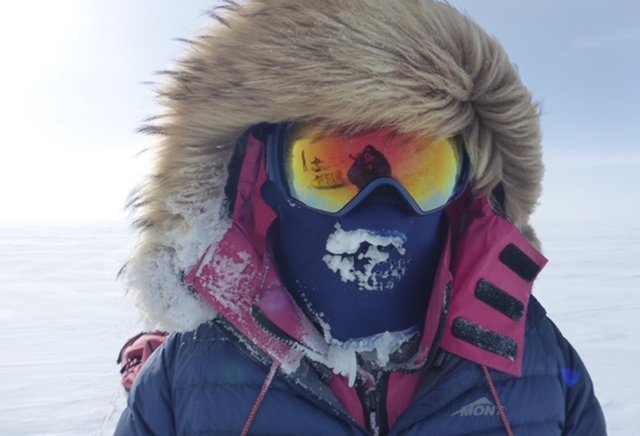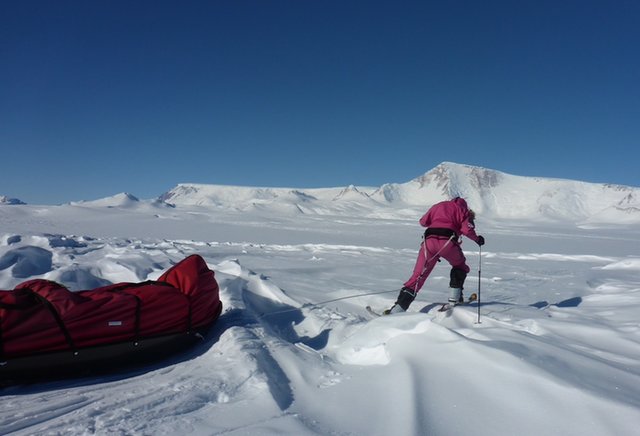Bottomless,blackicepitsbeneaththinlayersofsnow.Sharpiceridges,oneafteranother,likefrozenwavesacrosstheland.Howlingwindsandblowingice crystals.
JadeHameisterknewher SouthPolejourneywouldbehard.Butsheneverimagineditwouldbethisunforgiving.Shebentintothewindandstrainedtopulltheheavysupplysledstrappedtoherwaist.Allshecoulddowasputoneskiinfrontoftheother,onesmallstepata time.

Jadehauledherheavysledintostrong winds.
Jade'sbreathfrozeonherface mask.


Jadestruggledtodraghersledoverthe ice.
ForgingaPath
JadehadalreadycompletedtwopartsofthedemandingPolarHatTrick.ShehadskiedtotheNorthPoleandacrossGreenland.ThisSouthPoleadventurewouldbethefinalchallenge.Itwaseasytoseewhyhardlyanyone—letalonea 16‑year‑oldwoman—hadtriedtodowhatshewasattempting now.
Only140peopleinhistoryhaveskiedunsupportedandunassistedfromthecoastofAntarcticatotheSouthPole.Andonly20 ofthesewerewomen.ThesearesmallnumberswhenyoucompareittoallwhohaveclimbedMountEverest—5,000 or more!
UnsupportedandunassistedmeantthatJade’steamwouldtravelundertheirownmusclepower,withoutsleddogsorvehicles.Nosupplieswouldbeairliftedtothemalongtheway.Everysinglethingtheyneededfortheestimated40 dayshadtobeloadedontosledsandhauledalong.Bythetimethosesledswereheapedwithfood,campstovesandfuel,clothing,tents,andequipment,eachoneweighedmorethan80 kilograms(176 pounds).
Asifthiswasn’tenough,Jadeandherteamdecidedtotakeonanaddedchallenge.TheywantedtocreateanewroutetotheSouth Pole.
Theystudiedmapsandidentifieda coast‑to-poleroutethatnoonehadevertaken.TheywouldstartfromtheRossIceShelfontheAmundsenCoast.Mostotherexpeditionsfollowedroutesthatwerelongerbutflatter.Thisroutewouldtakethemthroughsteep,challengingterrain.They’dskiacrosstheKansasGlacierthroughtheTransantarcticMountainsthatdividethiscoldest continent.
Theexpeditionwasunsupportedandunassisted.Thatmeanttheteamhadtocarryorpulleverythingthey needed.